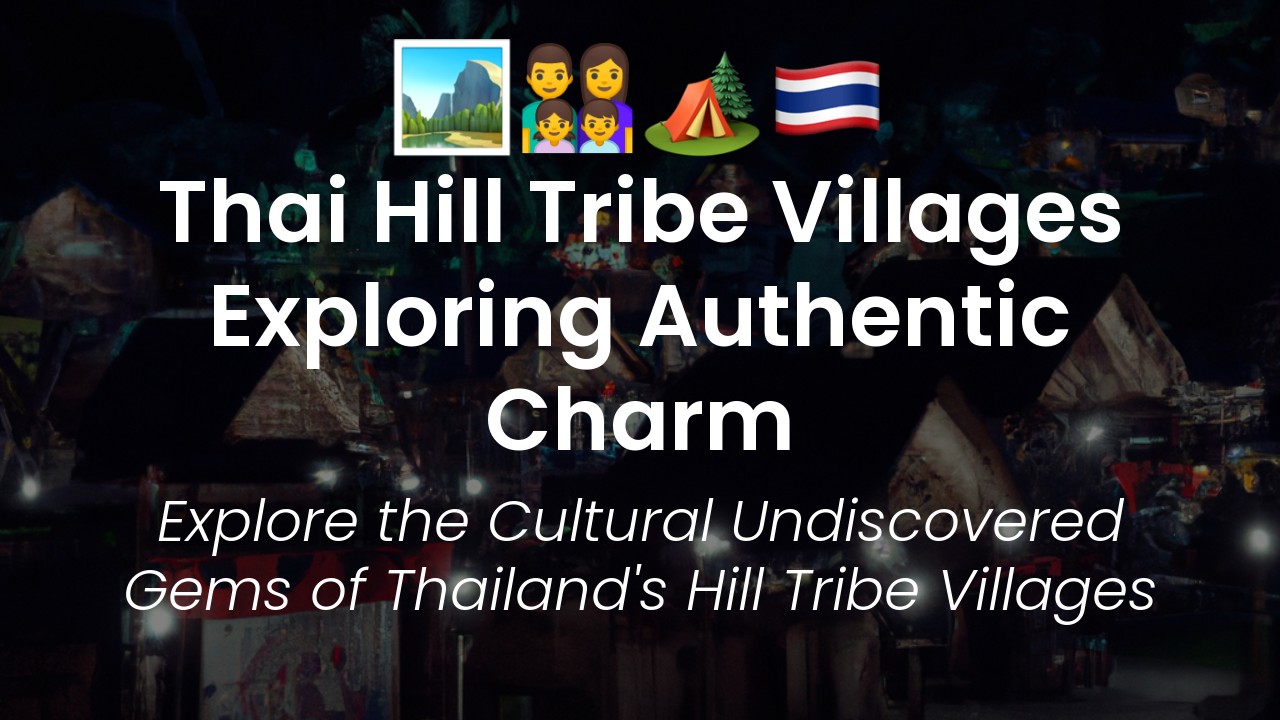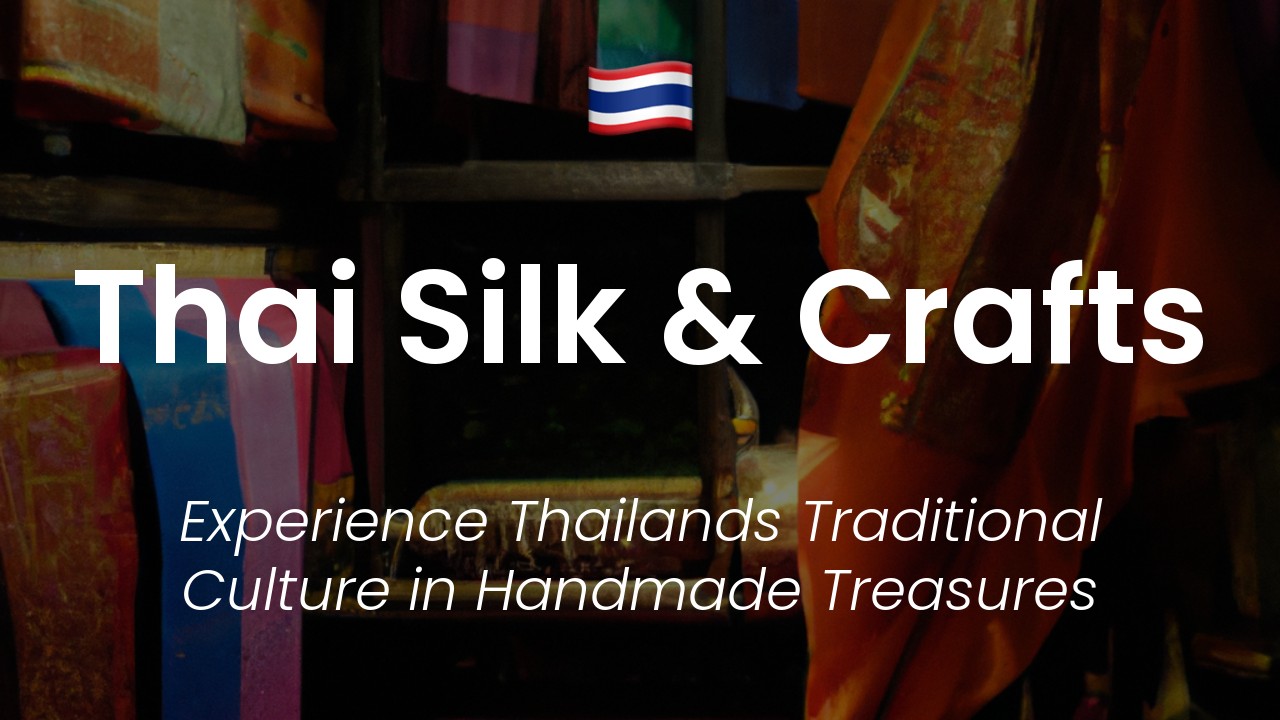As a proud Thai woman, I have always been fascinated by the diverse cultures and traditions that exist within my country's borders. One such group that has always captured my attention is the Hill Tribe people. These indigenous communities, scattered throughout the northern regions of Thailand, have their own distinct ways of life and customs that have been preserved for centuries.
Among the Hill Tribe groups are the Hmong, Akha, Lisu, and Karen people. Each group has its own unique language, clothing, beliefs, and practices, all of which contribute to the enriching tapestry of Thai culture. However, despite their rich cultural heritage, many of these communities are on the fringes of society, often overlooked by tourists and government initiatives alike.
As someone who is passionate about promoting and preserving Thai culture, I made it a personal mission to explore these Hill Tribe villages and shed light on their authentic charm. In my travels through northern Thailand, I have been privileged to witness firsthand the hospitality, warmth, and simplicity of these communities, and I am excited to share my experiences with you. So, join me on this journey of discovery as we delve into the hidden world of Thailand's Hill Tribe villages.
Geography of Hill Tribe Villages
Nestled amidst the lush green hills of Northern Thailand are villages inhabited by the vibrant Hill Tribe people. The region is a treasure-trove of natural beauty, cultural riches, and ethnic diversity. Hill Tribe Villages are found in the provinces of Chiang Mai, Chiang Rai, Mae Hong Son, and surrounding areas. These remote mountainous areas of Thailand can only be reached by winding mountain roads, making them a haven for adventurous travelers who are willing to go off the beaten track.
Each Hill Tribe village boasts a unique culture and tradition that has been preserved for generations. There are six main Hill Tribe Groups: Karen, Hmong, Yao, Lahu, Akha, and Lisu. They each have their own language, customs, and beliefs, creating a colorful tapestry of the region.
Hill Tribe Culture & Traditions
The Hill Tribe people have a strong connection to their land and nature. They are skilled in traditional crafts such as weaving, basketry, and silver-smithing. Each tribe has its own distinctive dress adorned with intricate embroidery, stunning beading, and bright colors. These customs and traditions are still alive today and can be experienced through visits to their villages, which will allow you to learn about their way of life, their beliefs and their customs.
For visitors interested in Hill Tribe cultures, there are many opportunities to experience authentic cultural practices. Some villages hold traditional ceremonies and festivals throughout the year while others offer homestays giving visitors a chance to experience daily life. There are even language immersion programs for those who want to learn the language of a Hill Tribe community.
How to Visit Hill Tribe Villages
Visiting Hill Tribe Villages can be an amazing and unforgettable experience. There are several ways to visit these communities. Some of the most popular include taking a guided tour, visiting on your own, and booking a homestay program. The best way to immerse yourself in Hill Tribe culture is by staying for a few days in one of the small villages, where you will have the opportunity to engage with the community and get a real taste of their daily life.
If you plan to visit without a guided tour, it’s recommended to know a little about the area and its people beforehand. Each tribe has its own beliefs and customs, and visitors should respect them. It’s important to be mindful of dress code and etiquette, and to follow local customs. When visiting a Hill Tribe village, always ask for permission before taking photos.
Homestays & Volunteer Opportunities
Homestays offer visitors the chance to live with a Hill Tribe family and experience their culture in a more meaningful way. With some homestay programs, you can help with their daily tasks, such as farming or cooking, and immerse yourself in their daily life. It’s a great way to understand how Hill Tribe communities work and make new friends.
There are also many opportunities for volunteering in Hill Tribe Villages. Volunteers can teach English to children, help with building and construction projects, and work on organic farms. Volunteering can be a rewarding experience, allowing travelers to give back to the community while learning about Hill Tribe culture.
Sustainable Tourism & Responsible Travel
It’s important for visitors to be conscious of the impact their visit has on Hill Tribe communities. Sustainable tourism and responsible travel practices can help preserve the Hill Tribe culture and way of life. When visiting Hill Tribe Villages, it’s important to support local businesses by buying locally-made crafts and produce. Responsible travelers should take care to not disturb the environment, respect the local customs and ways of life, and follow guidelines regarding photography.
There are many local initiatives and projects that promote responsible tourism in the area. By supporting these initiatives, visitors can make a positive impact on Hill Tribe villages, preserving their traditions and providing economic benefits to the community. It’s also important to use responsible travel companies and services that support sustainable tourism practices.







